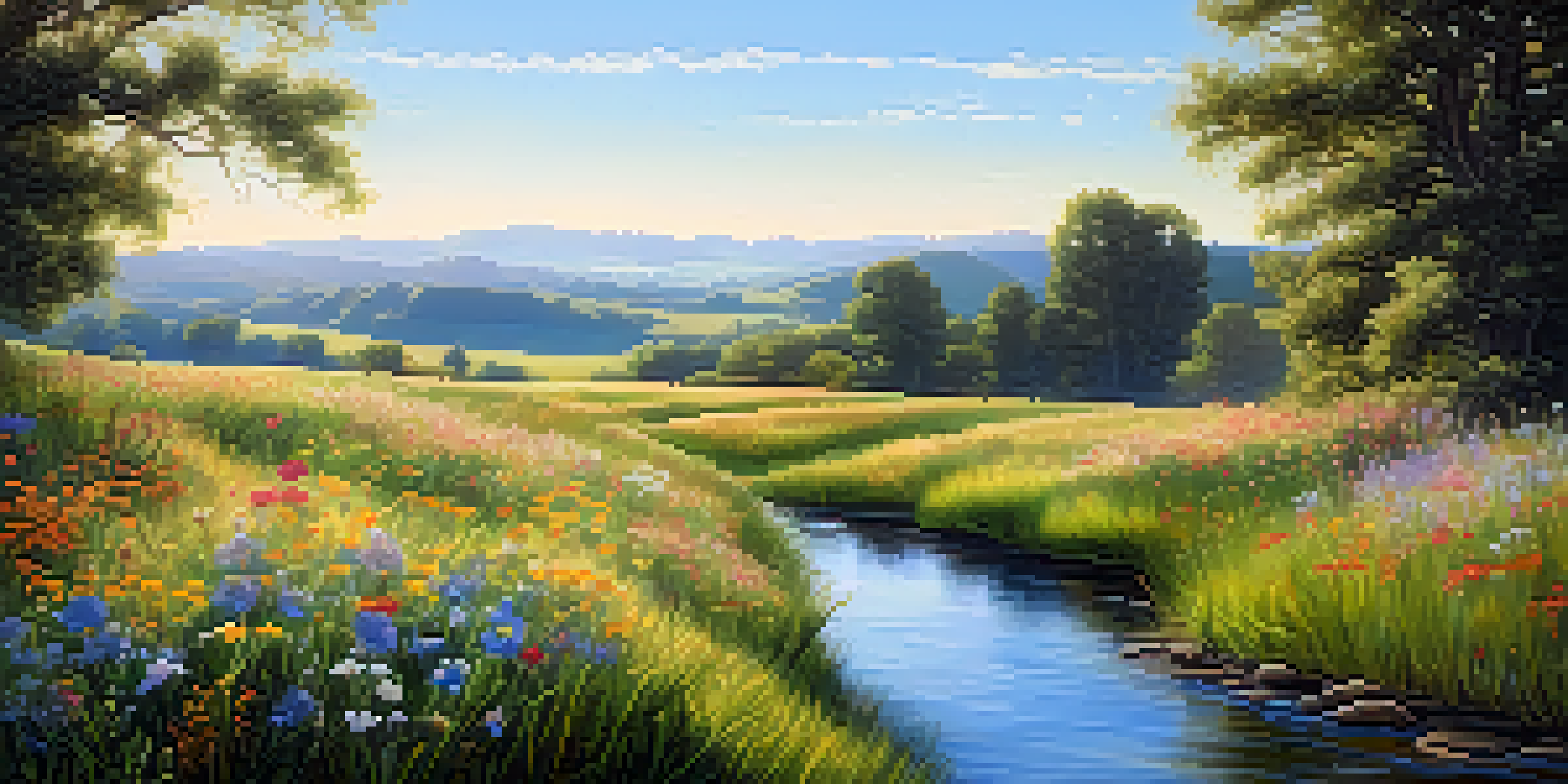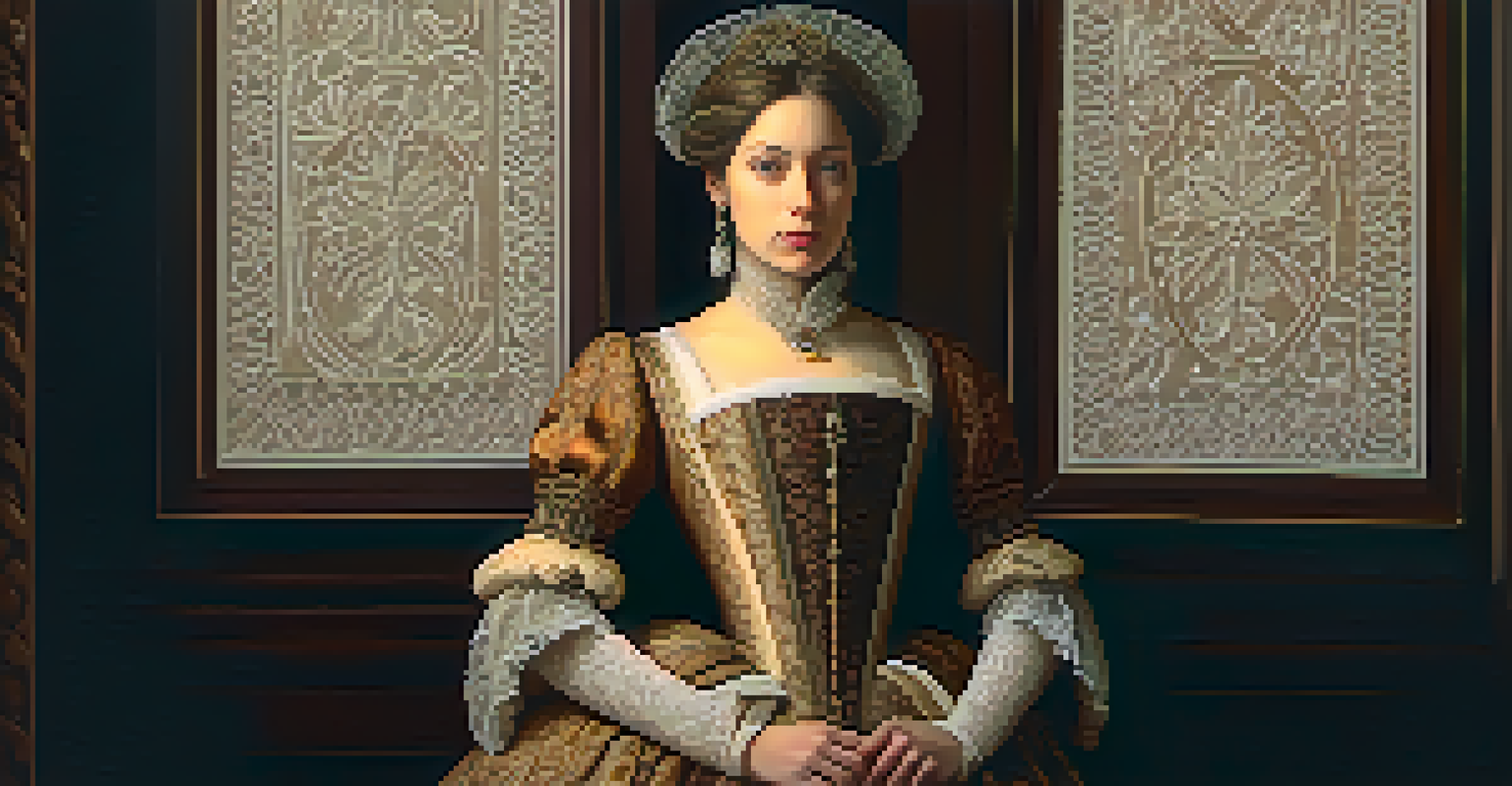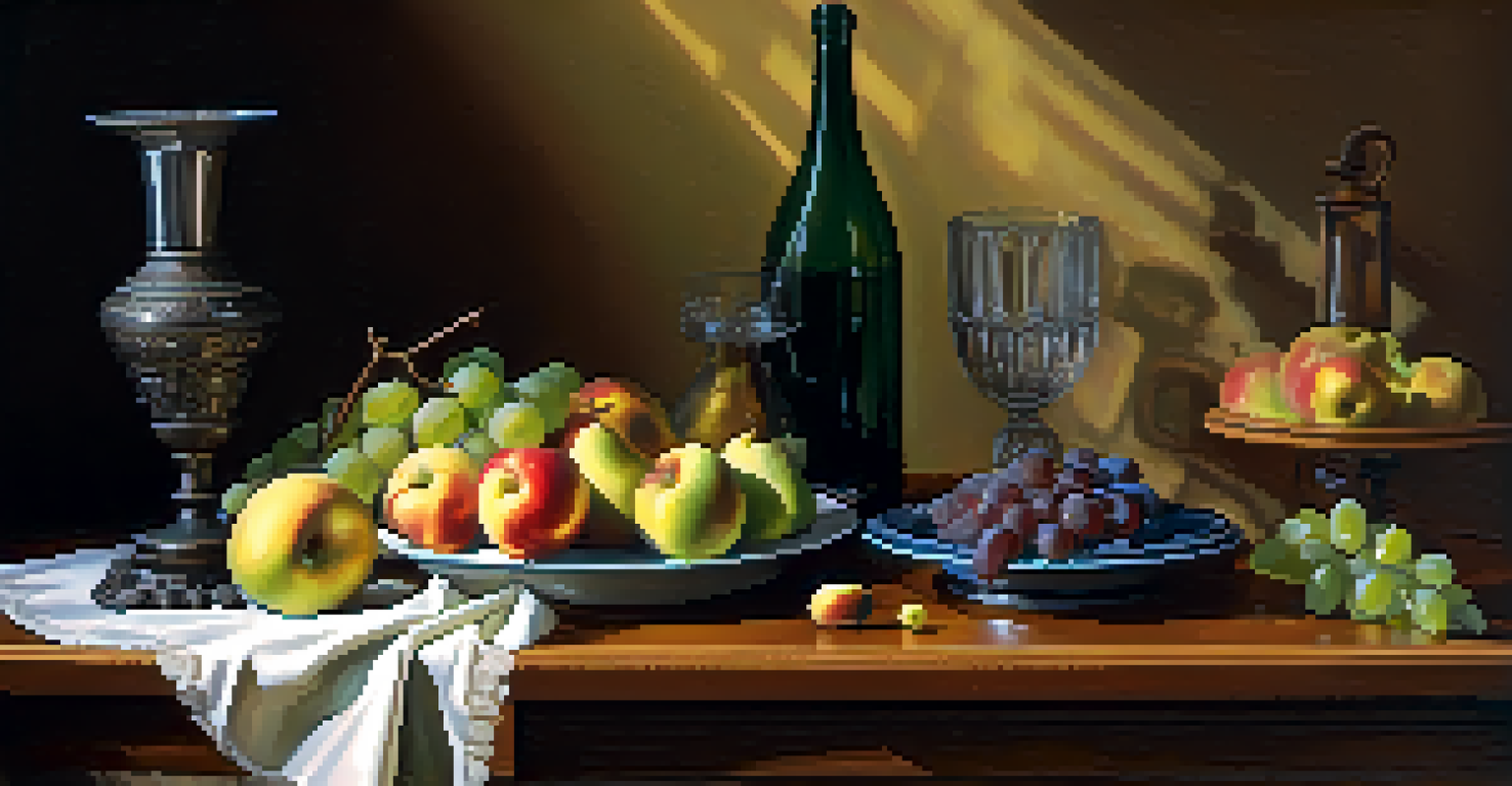The Influence of Renaissance Art on Contemporary Literature

Understanding the Renaissance: A Brief Overview
The Renaissance, which spanned from the 14th to the 17th century, marked a cultural rebirth in Europe. This period emphasized humanism, showcasing the potential of individuals and their experiences. Artists like Leonardo da Vinci and Michelangelo revolutionized art by focusing on realism and emotion, laying the groundwork for future artistic and literary developments.
Art is not freedom from discipline, but disciplined freedom.
During this time, literature also flourished, with writers such as Shakespeare drawing inspiration from the vivid imagery and themes present in Renaissance art. The interplay between visual art and literature during this time established a foundation for how stories could be told across different mediums. Understanding this era's essence is crucial for grasping its influence on contemporary works.
As we examine modern literature, it becomes clear that the Renaissance's impact is far-reaching. Themes of beauty, complexity, and the human condition persist in today's storytelling, echoing the sentiments expressed by Renaissance artists. It's fascinating to see how these age-old ideas still resonate in our narratives today.
Themes of Humanism in Literature
Humanism, a core principle of the Renaissance, emphasized the value of human beings and their experiences. This theme is prevalent in contemporary literature, where characters often grapple with their identities and the human experience. Writers today reflect on inner struggles, relationships, and societal roles, much like the figures found in Renaissance paintings.

For instance, novels that delve into personal conflicts or existential questions echo the depth of emotion seen in artworks like Botticelli's 'Birth of Venus.' The focus on individual narratives mirrors the Renaissance’s celebration of the self, inviting readers to explore their own humanity. This connection allows modern literature to resonate on a personal level.
Renaissance Influenced Humanism
The Renaissance's emphasis on humanism continues to resonate in modern literature, showcasing the complexities of identity and the human experience.
Moreover, the exploration of humanism in literature often leads to broader social commentaries. Just as Renaissance artists challenged societal norms through their work, contemporary authors use their narratives to provoke thought and inspire change. This ongoing dialogue between art and literature underscores the timeless relevance of humanistic themes.
Symbolism in Renaissance Art and Literature
Renaissance artists were masters of symbolism, embedding deeper meanings into their works through color, composition, and subject matter. This use of symbolism has been embraced by modern writers, who often employ metaphors and allegories to convey complex ideas. For instance, a character's journey can symbolize broader societal issues, drawing parallels to the symbolic layers found in Renaissance paintings.
The more I read, the more I acquire, the more certain I am that I know nothing.
Take, for example, how Dante's 'Divine Comedy' employs vivid imagery and allegorical figures that reflect the moral and philosophical questions of his time. Modern authors, similarly, create rich, layered narratives that encourage readers to interpret meanings beyond the surface. This technique not only enriches the reading experience but also engages audiences in critical thinking.
The influence of symbolism extends beyond individual works, shaping genres and literary movements. From Gothic literature to magical realism, the symbolic legacy of the Renaissance can be seen in the diverse ways contemporary writers craft their stories. This connection highlights the enduring power of art to inspire and inform literature.
The Aesthetic Influence of Visual Art
The aesthetic qualities of Renaissance art have profoundly influenced contemporary literature, particularly in descriptive writing. Authors often draw on visual imagery to create vivid scenes that transport readers into their stories. Much like a Renaissance painting, a well-crafted passage can evoke emotions and paint pictures in the reader's mind.
For example, in works like 'The Great Gatsby,' F. Scott Fitzgerald employs lush descriptions that resemble the opulent scenes depicted in Renaissance art. This style not only captures the beauty of the setting but also enhances the thematic depth of the story. By invoking rich visual elements, authors can create immersive worlds that resonate with readers.
Symbolism Connects Art and Literature
Both Renaissance art and contemporary literature use symbolism to convey deeper meanings, enriching narratives and inviting critical interpretation.
Furthermore, the interplay between visual art and literature fosters a multi-sensory experience. Just as Renaissance artists played with light and shadow, contemporary writers manipulate language to evoke sensations and emotions. This connection between the arts encourages a richer appreciation of storytelling, reminding us that literature, much like visual art, can be a profound form of expression.
Intertextuality: Echoes of the Past
Intertextuality, the practice of referencing or incorporating elements from other texts, plays a significant role in modern literature's connection to Renaissance art. Authors often draw inspiration from past works, creating a dialogue between their narratives and historical texts or artworks. This practice not only honors the influences of the past but also enriches the contemporary storytelling landscape.
For instance, novels that reinterpret classic themes or characters from Renaissance literature can create a sense of continuity and relevance. By weaving in these historical references, authors invite readers to explore the interplay between old and new, fostering a deeper understanding of both. This approach highlights how interconnected our literary traditions are.
Moreover, this intertextual relationship allows contemporary literature to respond to and critique the themes explored by Renaissance artists and writers. Just as Renaissance thinkers questioned societal norms, modern authors use their narratives to reflect on contemporary issues, creating a layered conversation that bridges time and context. This dialogue enhances the richness of both literature and art.
Renaissance Art's Role in Character Development
Character development is a cornerstone of both Renaissance art and contemporary literature. The detailed portrayals of human emotions and complexities in Renaissance paintings influence how modern authors construct their characters. Just as artists captured the essence of their subjects, writers today strive to create multidimensional characters that resonate with readers.
For example, the expressive faces in Leonardo da Vinci's portraits reflect a range of emotions that writers often aim to capture in their characters. By delving into a character's psyche, authors can evoke empathy and connection, much like the emotional depth found in Renaissance art. This parallel emphasizes the importance of understanding human nature in storytelling.
Art Shapes Character Development
The emotional depth and character portrayals in Renaissance art influence modern authors to create multidimensional characters that reflect the human experience.
Additionally, the evolution of characters often mirrors the transformative experiences depicted in Renaissance art. Just as figures in paintings undergo personal journeys, modern characters navigate challenges that lead to growth and change. This narrative arc not only engages readers but also reflects the timeless human experience, bridging the gap between past artistic expressions and contemporary storytelling.
Conclusion: The Enduring Legacy of the Renaissance
The legacy of Renaissance art continues to shape contemporary literature in profound ways. From themes of humanism and symbolism to the aesthetic influences and character development, the connections are rich and multifaceted. As modern authors draw on the artistic innovations of the Renaissance, they create works that resonate with timeless relevance.
This enduring influence offers a reminder of the power of art to inspire and provoke thought across generations. Just as Renaissance artists transformed the cultural landscape of their time, contemporary writers are doing the same today, exploring the complexities of the human experience. The conversation between art and literature remains vibrant and essential.

In embracing the lessons of the past, writers not only honor the artists who came before them but also invite readers to engage in a deeper exploration of their own humanity. The impact of Renaissance art on contemporary literature serves as a testament to the enduring power of creativity, reminding us that art, in all its forms, continues to shape our understanding of the world.